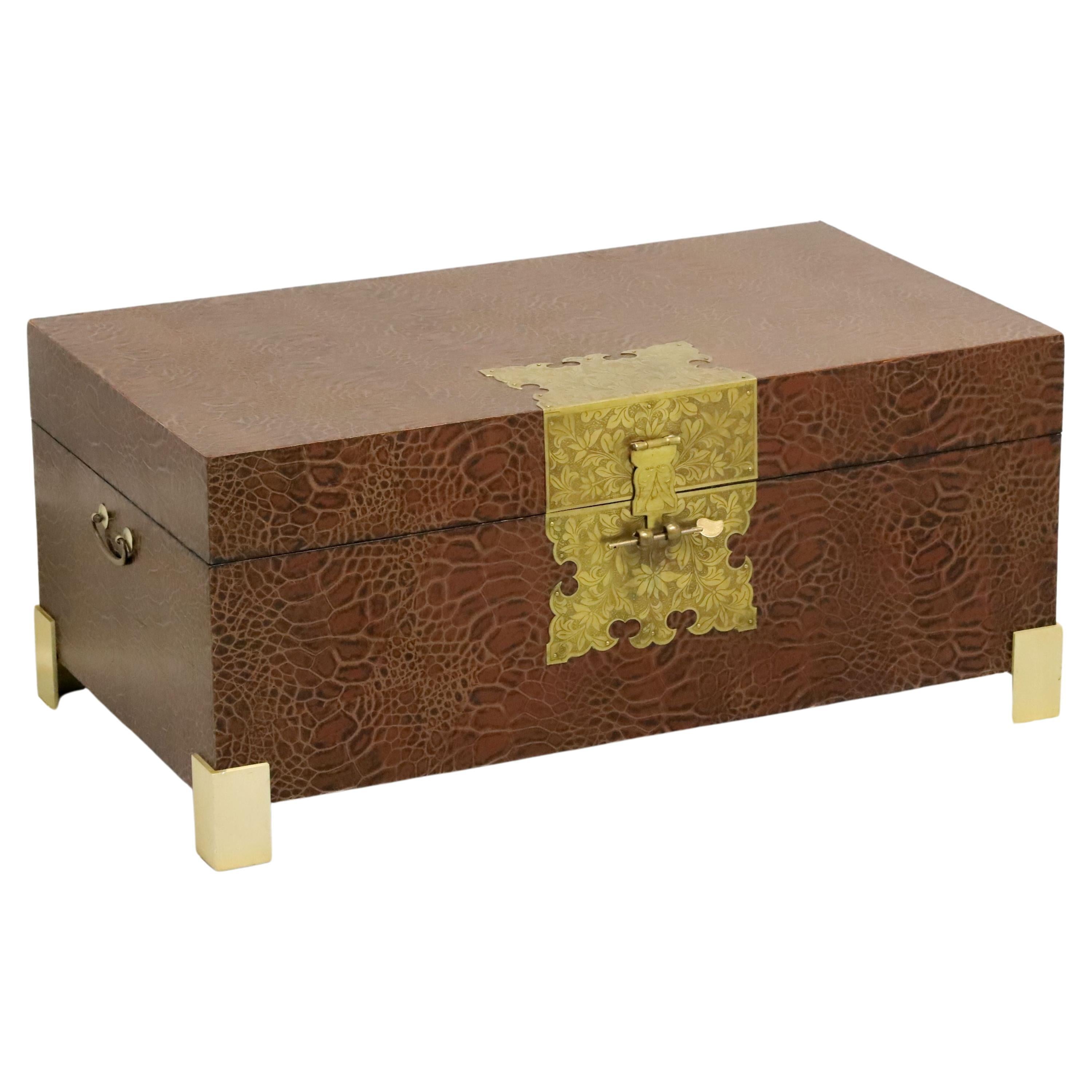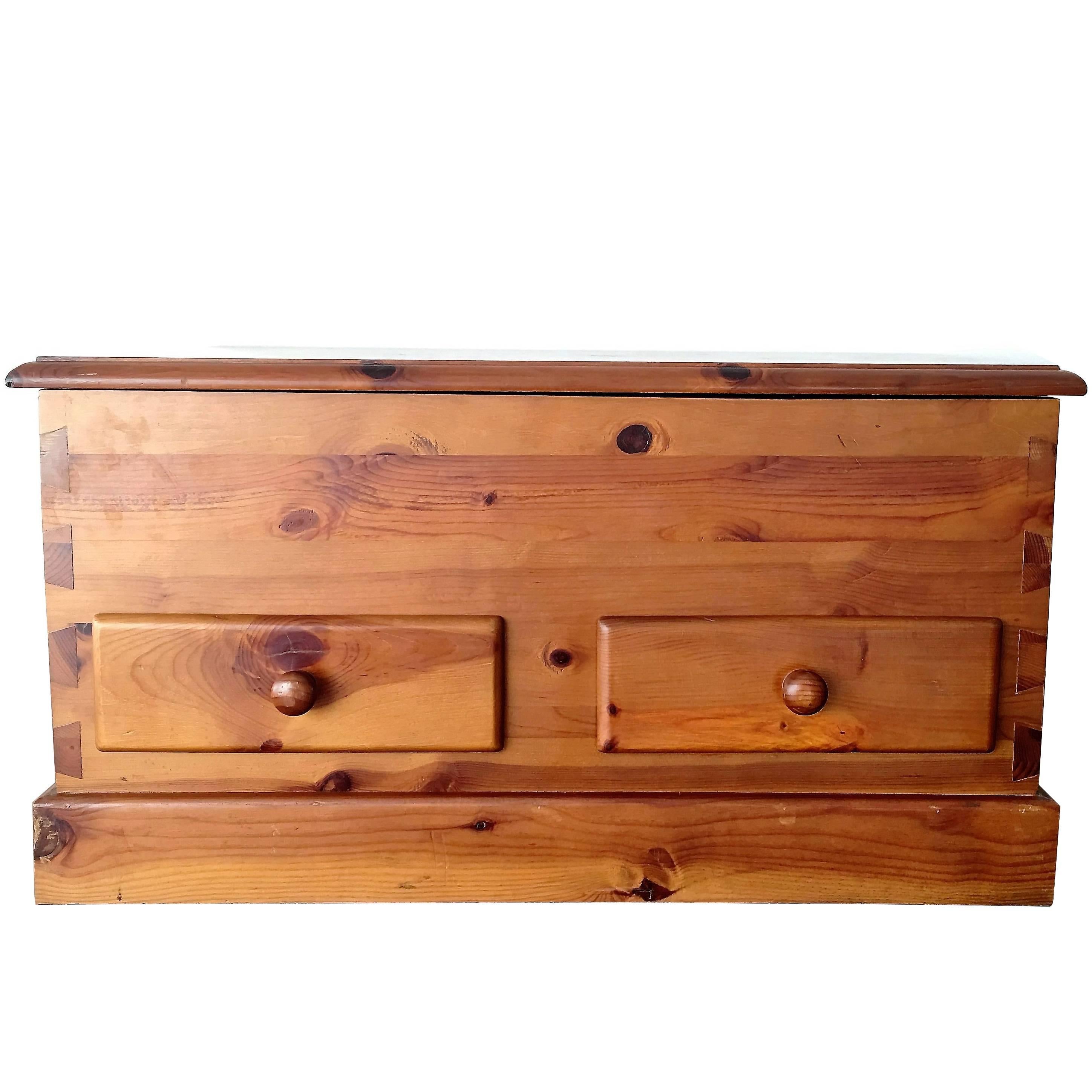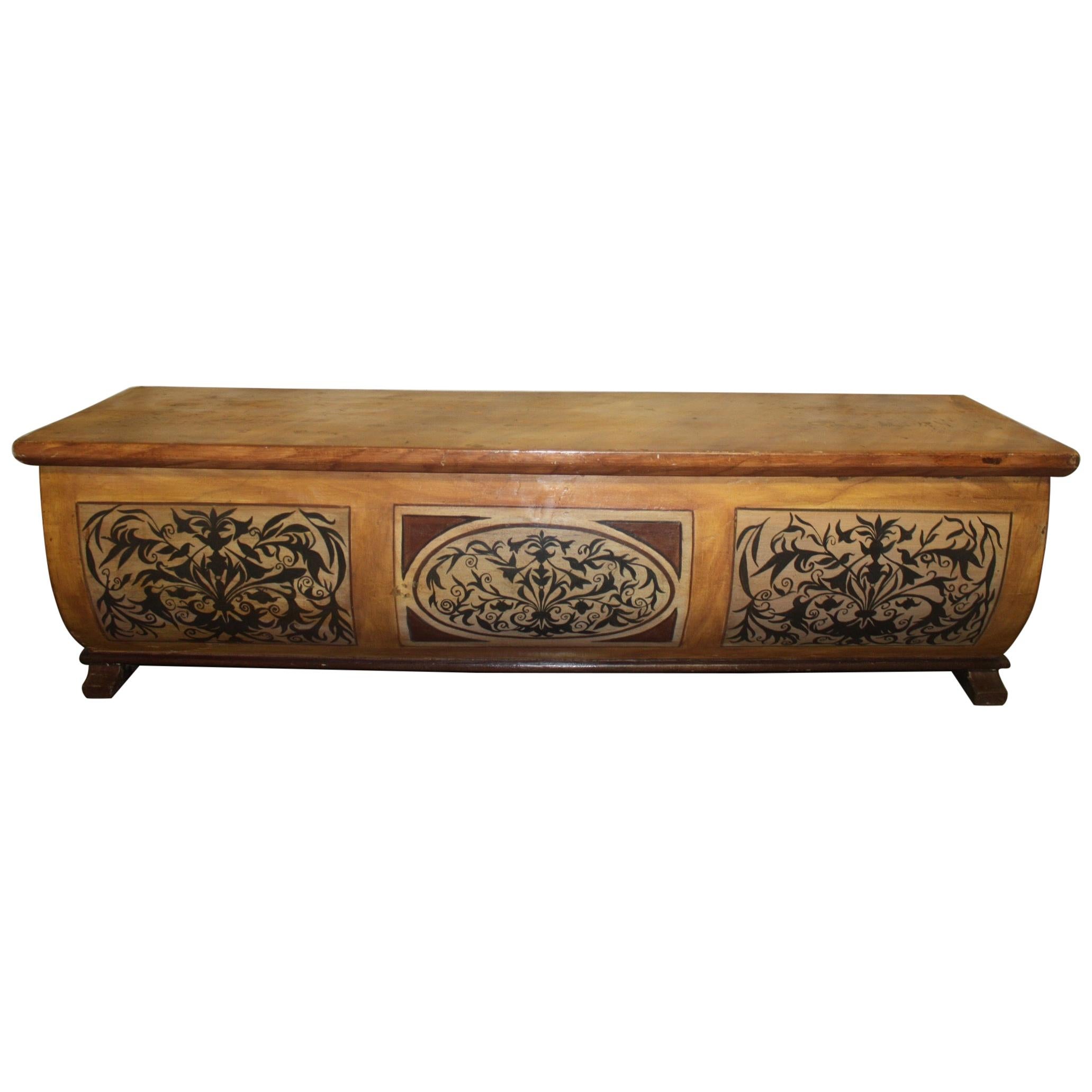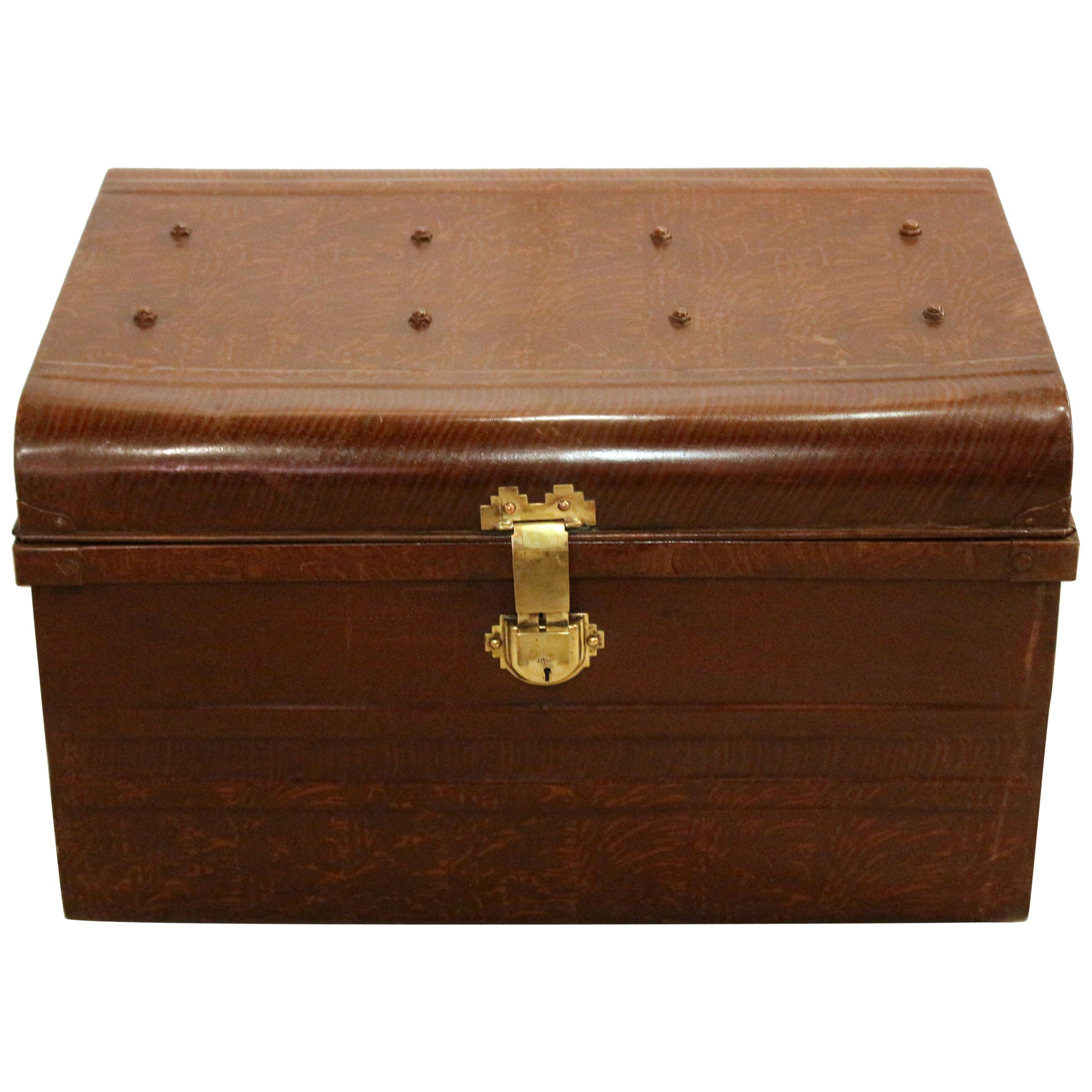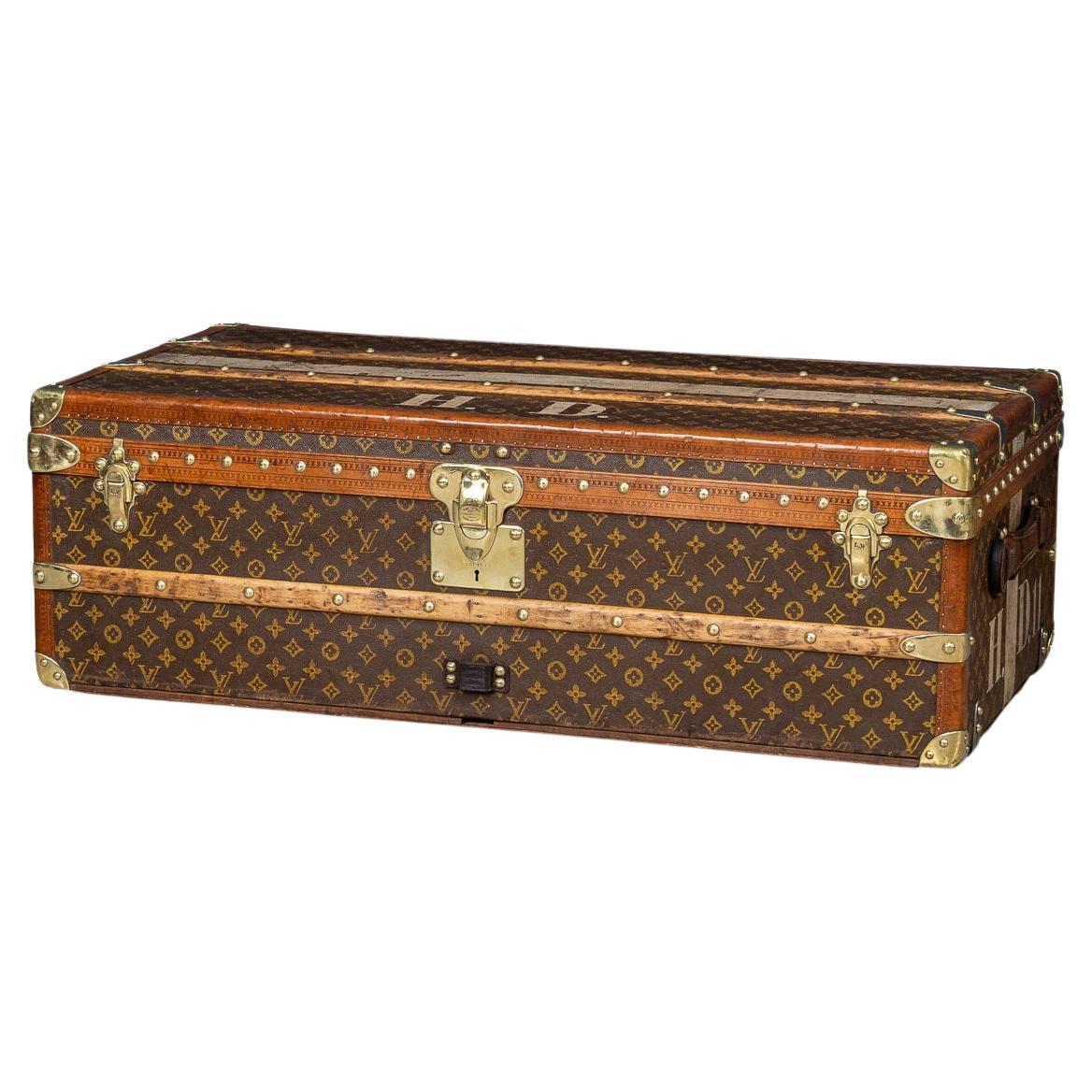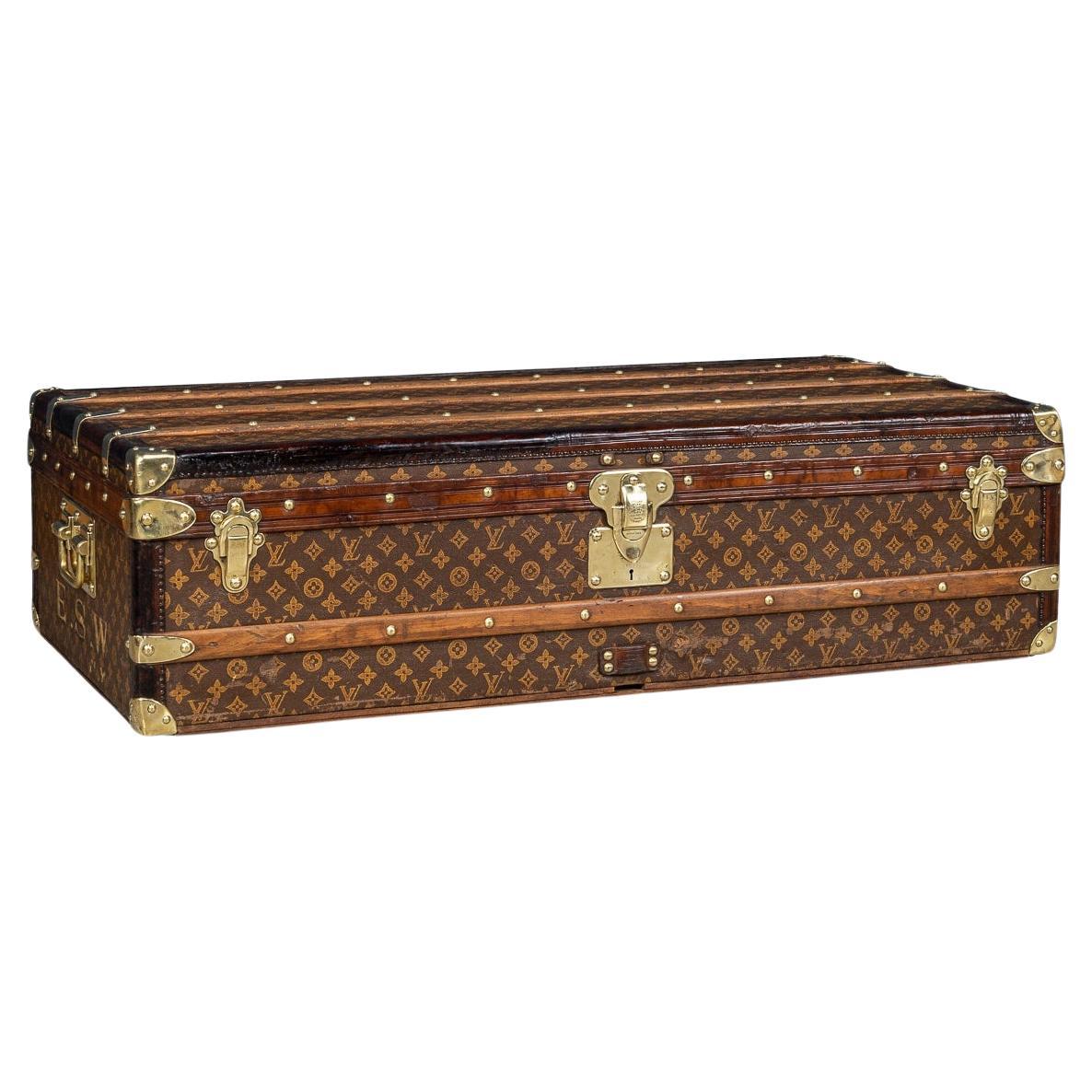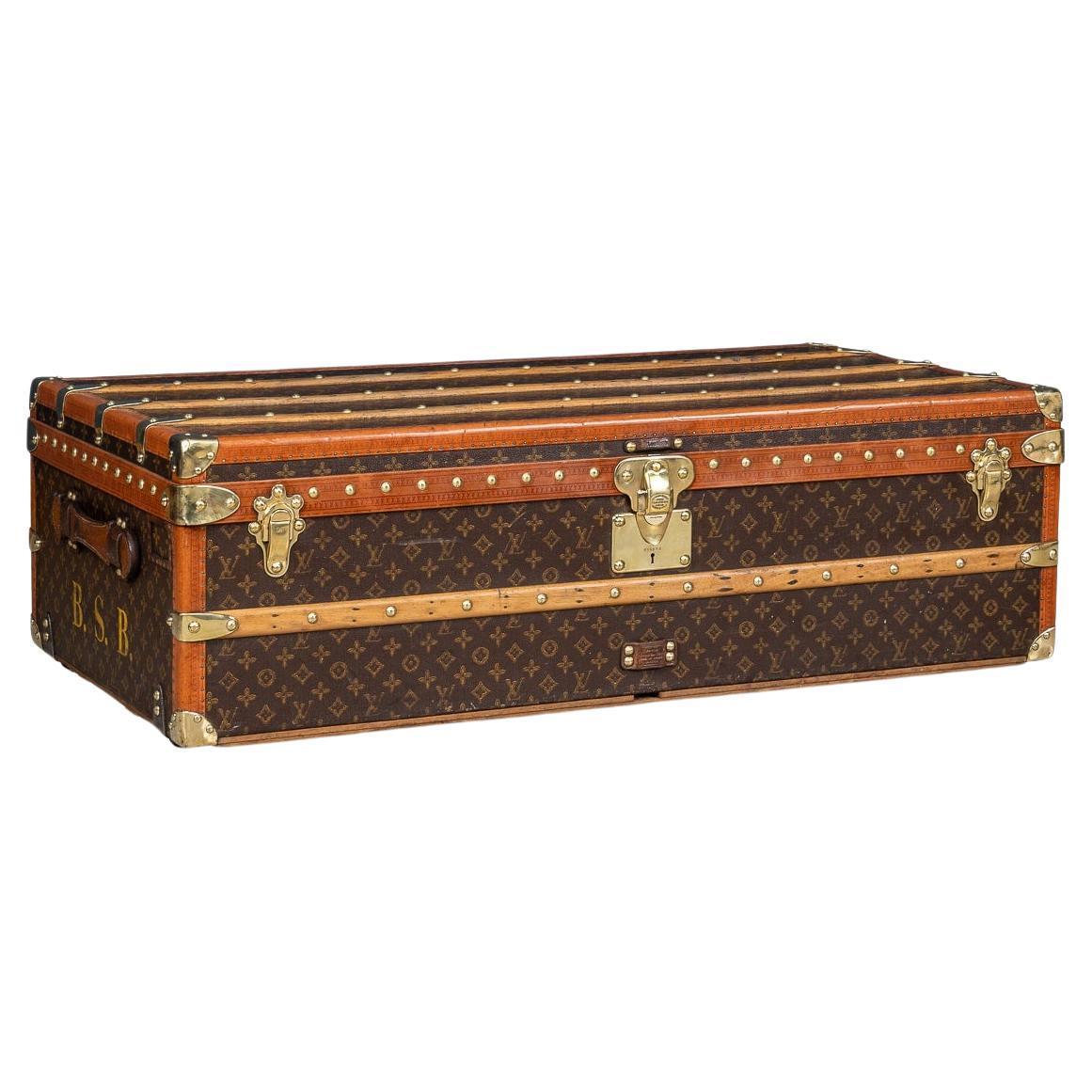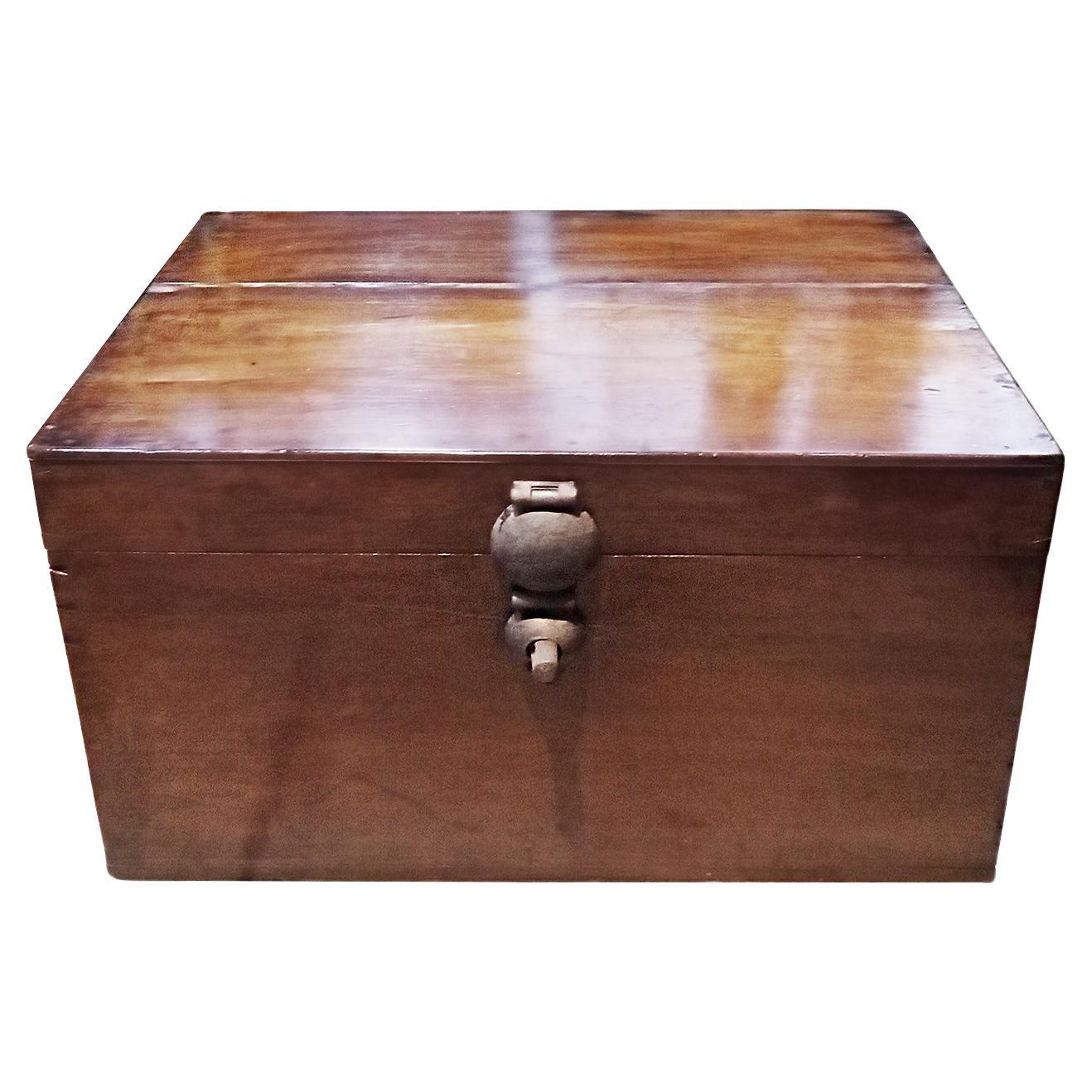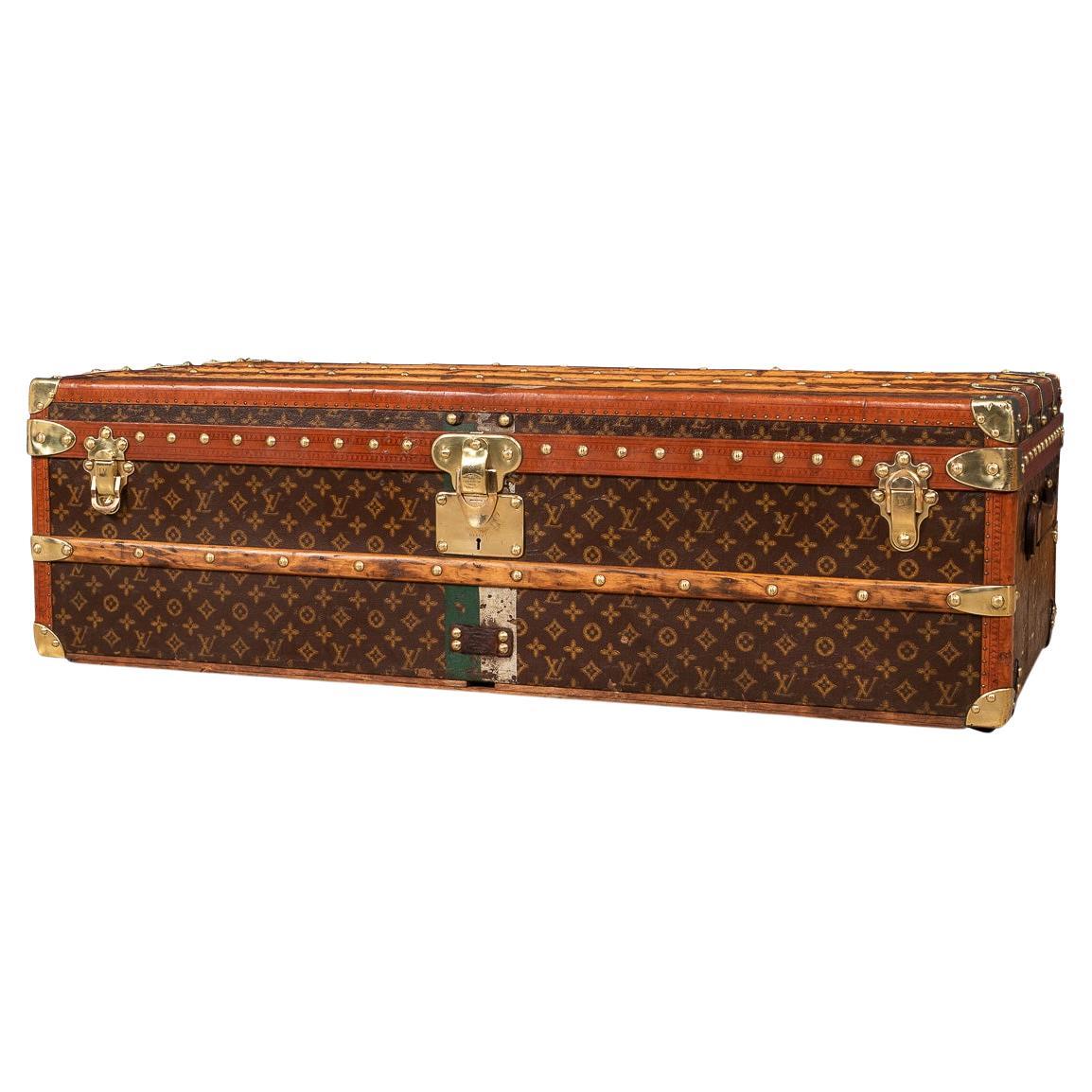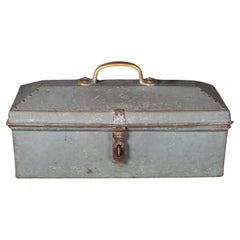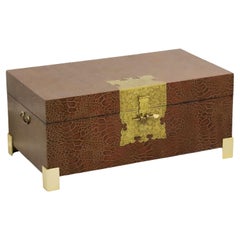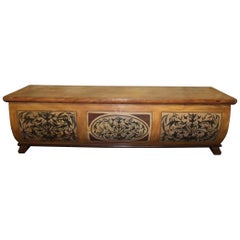
Mid-20th Century U.S. Army Trunk
View Similar Items
Want more images or videos?
Request additional images or videos from the seller
1 of 9
Mid-20th Century U.S. Army Trunk
About the Item
- Dimensions:Height: 10.5 in (26.67 cm)Width: 24 in (60.96 cm)Depth: 12 in (30.48 cm)
- Materials and Techniques:
- Place of Origin:
- Period:
- Date of Manufacture:circa 1954
- Condition:Wear consistent with age and use.
- Seller Location:San Francisco, CA
- Reference Number:1stDibs: LU128024013743
About the Seller
5.0
Platinum Seller
These expertly vetted sellers are 1stDibs' most experienced sellers and are rated highest by our customers.
Established in 2014
1stDibs seller since 2015
1,144 sales on 1stDibs
More From This SellerView All
- Early 20th c. Distressed Metal Chest c.1930Located in San Francisco, CAABOUT An antique distressed metal chest with cast iron handles and wooden straps. Original metal label inside. CREATOR W.C. Kerch, Cleveland. DATE OF MANUFACTURE c.1930-194...Category
Early 20th Century Industrial Trunks and Luggage
MaterialsMetal, Iron
$372 Sale Price20% Off - Early 20th c. Factory Toolbox with Solid Bronze Handle c.1930-1940Located in San Francisco, CAABOUT A factory metal toolbox with solid bronze handle and riveted top. CREATOR Unknown. DATE OF MANUFACTURE c.1930-1940. MATERIALS AND TECHNIQUES Metal, Bronze. CO...Category
Early 20th Century Industrial Trunks and Luggage
MaterialsMetal, Bronze
$135 Sale Price22% Off - WWII Swiss Army Canvas Map Bag c.1940 (FREE SHIPPING)Located in San Francisco, CAABOUT A vintage Swiss Army canvas map bag with leather accents and rope handle. The interior has one pouch and clear, second pouch for maps. Two vintage m...Category
Early 20th Century Swiss Industrial Trunks and Luggage
MaterialsMetal
$58 Sale Price40% Off - World War 2 Era Military Trunk, c.1940Located in San Francisco, CAAbout A World War 2 era Army military trunk with original stenciled graphics on top, label and hinged lid. Army green with black and brick red stencil. ...Category
Early 20th Century Trunks and Luggage
MaterialsAluminum
$1,020 Sale Price45% Off - Mid-Century Ram Bookends C.1950Located in San Francisco, CAABOUT A pair of bronze finish stylized mid-century ram bookends. Both bookends retain their original felt on the bottom. CREATOR Unknown. DATE OF...Category
Mid-20th Century American Mid-Century Modern Bookends
MaterialsBronze
$275 / set - Early 20th C. Farmers Market Trunk C.1940Located in San Francisco, CAAbout A rustic wooden dairy farm box used to sell cheese at farmers markets from O'Allen & Son Green Valley Dairy in Sonoma. Creator O'Allen & Son Green Valley Dairy. Date o...Category
Mid-20th Century Rustic Decorative Boxes
MaterialsWood
$744 Sale Price20% Off
You May Also Like
- Mid 20th Century Faux Reptile Asian Chinoiserie TrunkLocated in Charlotte, NCAn Asian chinoiserie style faux reptile leather trunk, unbranded. Wood frame covered with artificial reptilian leather, decorative brass hardware, non-locking decorative Asian key, D...Category
Mid-20th Century Asian Chinoiserie Trunks and Luggage
MaterialsBrass
- 20th Century Trunk for StorageLocated in Miami, FL20th century chest on bracket feet with a top that opens to reveal storage and drawers below.Category
Vintage 1940s Spanish Modern Wardrobes and Armoires
MaterialsPine
- Early 20th Century French Bench TrunkLocated in Stockbridge, GAEarly 20th century French bench trunk.Category
Early 20th Century French Renaissance Benches
MaterialsWood
- Late 19th-Early 20th Century Steel TrunkLocated in Chapel Hill, NCLate 19th to early 20th century steel trunk with original faux bois paint, English. Brass latch lock with shaped backplates. Swing handles. Red painted interior. Ideal as a coffee ta...Category
Antique Late 19th Century Other Trunks and Luggage
MaterialsSteel
- 20th Century Louis Vuitton Trunk, France c.1930By Louis VuittonLocated in Royal Tunbridge Wells, KentAn exquisite and complete Louis Vuitton trunk from the early part of the 20th century. An absolutely essential item for elite travellers of its time the trunk is adorned in the iconic LV monogrammed canvas, accented by lozine trim and brass fittings. This trunk stood as the epitome of luxury over 100 years ago, boasting an unparalleled level of sophistication and elegance, it remains a timeless masterpiece that transcends eras. The captivating allure of the Louis Vuitton trunk transforms it into more than a mere luggage accessory; it becomes a focal point for any room. With its impressive dimensions, it is perfectly suited as a striking coffee table, side table, or even as a standalone centrepiece, seamlessly integrating into any interior, whether modern or traditional. An extraordinary piece that not only pays homage to the past but also serves as a statement of unparalleled luxury in the present. A brief history about Louis Vuitton trunks: Louis Vuitton was born in 1821 to a farmer and milliner and came from a long-established working-class family in eastern France. Vuitton grew up understanding the effects of perseverance and a strong work ethic from watching his family. At the age of 16, he made the decision to walk 292 miles from his hometown to Paris to try and make a new life for himself. When he arrived the city was in the midst of industrialization with current modes of transportation evolving quickly allowing for longer journeys. With this came the need for sturdy travel pieces. Vuitton was taken as an apprentice for a successful box maker and packer named Monsieur Marechal. He learned to craft durable containers and how to pack them properly – a well-respected profession at the time.In 1854, years after he had mastered his craft and became well respected for it, Vuitton ventured out on his own to open a shop on Rue Neuve des Capucines. It was here that he began to establish himself as a luggage maker. Then, in 1858, Vuitton designed the first Louis Vuitton steamer trunk. At the time trunks had rounded tops to allow for water to run off but this did not allow for convenient stowage. Vuitton introduced a flat, yet waterproof, trunk that was easily stackable. The first of his trunks were outfitted with a grey canvas referred to as Trianon – it wouldn’t be until several decades later that the signature monogram would be introduced. With a burgeoning business, Vuitton moved his family and workplace to Asniere, where he employed twenty workers to craft his trunks. By 1900 he would have 100 employees, and in 1914 the company would more than double in size. After years of success, Vuitton began to experiment with the design of his luggage by introducing a new striped canvas pattern (1876) and later the still well-known Damier print (1888). The hand-painted patterns were developed to prevent counterfeits. Even in the late 1800s, Louis Vuitton was enough of a status symbol to warrant counterfeiting. In 1886, his son George invented and patented an ingenious locking system that made it impossible to pick the lock of their trunks. This lock is still used today. 1892 would prove to be a time of mourning for the family as Louis Vuitton passed...Category
20th Century French Other Trunks and Luggage
MaterialsBrass
- 20th Century Louis Vuitton Trunk, France c.1910By Louis VuittonLocated in Royal Tunbridge Wells, KentAn exquisite and complete Louis Vuitton trunk from the early part of the 20th century. An absolutely essential item for elite travellers of its time the trunk is adorned in the iconic LV monogrammed canvas, accented by lozine trim and brass fittings. This trunk stood as the epitome of luxury over 100 years ago, boasting an unparalleled level of sophistication and elegance, it remains a timeless masterpiece that transcends eras. The captivating allure of the Louis Vuitton trunk transforms it into more than a mere luggage accessory; it becomes a focal point for any room. With its impressive dimensions, it is perfectly suited as a striking coffee table, side table, or even as a standalone centrepiece, seamlessly integrating into any interior, whether modern or traditional. An extraordinary piece that not only pays homage to the past but also serves as a statement of unparalleled luxury in the present. A brief history about Louis Vuitton trunks: Louis Vuitton was born in 1821 to a farmer and milliner and came from a long-established working-class family in eastern France. Vuitton grew up understanding the effects of perseverance and a strong work ethic from watching his family. At the age of 16, he made the decision to walk 292 miles from his hometown to Paris to try and make a new life for himself. When he arrived the city was in the midst of industrialization with current modes of transportation evolving quickly allowing for longer journeys. With this came the need for sturdy travel pieces. Vuitton was taken as an apprentice for a successful box maker and packer named Monsieur Marechal. He learned to craft durable containers and how to pack them properly – a well-respected profession at the time.In 1854, years after he had mastered his craft and became well respected for it, Vuitton ventured out on his own to open a shop on Rue Neuve des Capucines. It was here that he began to establish himself as a luggage maker. Then, in 1858, Vuitton designed the first Louis Vuitton steamer trunk. At the time trunks had rounded tops to allow for water to run off but this did not allow for convenient stowage. Vuitton introduced a flat, yet waterproof, trunk that was easily stackable. The first of his trunks were outfitted with a grey canvas referred to as Trianon – it wouldn’t be until several decades later that the signature monogram would be introduced. With a burgeoning business, Vuitton moved his family and workplace to Asniere, where he employed twenty workers to craft his trunks. By 1900 he would have 100 employees, and in 1914 the company would more than double in size. After years of success, Vuitton began to experiment with the design of his luggage by introducing a new striped canvas pattern (1876) and later the still well-known Damier print (1888). The hand-painted patterns were developed to prevent counterfeits. Even in the late 1800s, Louis Vuitton was enough of a status symbol to warrant counterfeiting. In 1886, his son George invented and patented an ingenious locking system that made it impossible to pick the lock of their trunks. This lock is still used today. 1892 would prove to be a time of mourning for the family as Louis Vuitton passed...Category
20th Century French Other Trunks and Luggage
MaterialsBrass
Recently Viewed
View AllMore Ways To Browse
Vintage Wood And Metal Trunk
Vintage Black Metal Trunk
Army Trunk
Vintage Army Trunks
Vintage Louis Vuitton Trunk Monogram
Lv Luggage Trunk
Louis Vuitton Steamer Trunks
Early Louis Vuitton Trunk
Vintage Wood Trunk
Period Trunks
Louis Vuitton 1930
Vintage Louis Vitton Trunks
Antique Steamer Trunks
Antique Metal Trunks
Antique Trunks And Boxes
Louis Vuitton Monogram Steamer
Trunk Spain
Inside Antique Trunks
